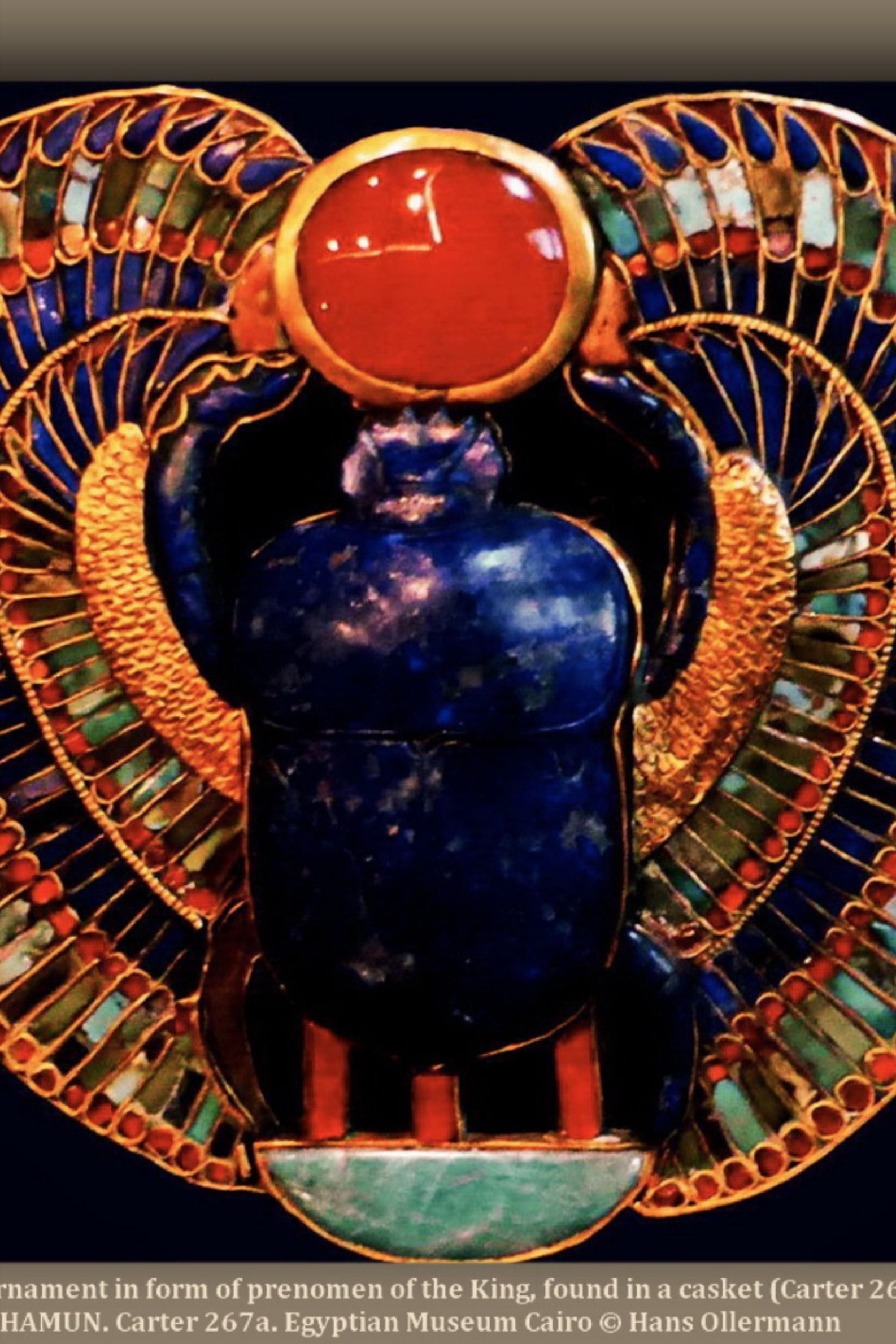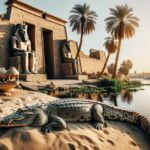The scarab beetle, a sacred symbol in ancient Egypt, embodied the cyclical journey of life, death, and rebirth, mirroring the sun god Ra’s eternal passage across the sky. More than just an insect, it represented transformation, resurrection, and the promise of eternal life, becoming a potent amulet of protection and divine connection. Join us as we explore the rich tapestry of meanings surrounding this captivating creature, from its association with Ra to its pervasive presence in Egyptian society.
The Sacred Symbolism of the Scarab
Why did a beetle pushing dung hold such profound significance for the ancient Egyptians? The scarab beetle wasn’t merely an insect; it embodied powerful concepts of transformation, rebirth, and the sun god himself. The Egyptians observed the scarab rolling its dung ball and saw a parallel with the sun god Ra, who they believed rolled the sun across the heavens each day. This humble act became a powerful image of the cycle of life, death, and renewal. The very word for scarab in hieroglyphs, “kheper” (or “xpr”), translates to “to become,” “to transform,” or “to create,” further solidifying this connection.
Core Symbolisms of the Scarab
The scarab beetle’s symbolism is multifaceted, encompassing a range of interconnected meanings:
- Rebirth and Renewal: Emerging from the dung, the scarab represented new beginnings and the cyclical nature of life, echoing the sun’s journey from darkness to light.
- Transformation: The beetle’s metamorphosis from larva to adult symbolized personal growth and change, inspiring the Egyptians to embrace life’s transformative power.
- Protection: Scarab amulets were worn as talismans against evil and misfortune, perhaps inspired by the beetle’s tough outer shell. They were believed to offer a shield against unseen forces.
- Divine Power: The scarab’s association with Ra imbued it with divine power. It became a symbol of the sun’s life-giving energy and the pharaoh’s connection to the gods, reinforcing their authority.
- Cyclical Nature: Mirroring the sun’s daily journey, the scarab embodied the cyclical nature of existence, reinforcing the Egyptian belief in life, death, and rebirth.
The Scarab’s Role in Egyptian Culture
Scarab amulets were ubiquitous in ancient Egyptian society, crafted from diverse materials like lapis lazuli, carnelian, faience, and even gold. Their presence spanned from royal tombs to everyday life, highlighting their profound spiritual and cultural significance.
Uses of Scarab Amulets
- Funerary Rites: “Heart scarabs” inscribed with protective spells were placed on the deceased’s heart during mummification to guide their soul through the underworld and ensure successful resurrection.
- Personal Adornment: Egyptians wore scarab amulets as jewelry – rings, necklaces, bracelets – believing they conferred good luck and protection. Some amulets even bore the names of pharaohs, perhaps invoking royal favor.
- Official Seals: Scarabs served as official seals, authenticating documents and signifying ownership. This administrative function demonstrates their importance beyond the spiritual realm.
Beyond amulets, scarab imagery appeared extensively in Egyptian art, architecture, and hieroglyphic writing. They adorned temples, tombs, and even tools like the ingenious Shaduf used for irrigation. This pervasive presence underscores the beetle’s integral role in Egyptian culture. Discover more about ancient Egyptian ingenuity by exploring the Spangenhelm, the iconic helmet of Viking warriors. (This link seems out of place, consider revising or removing.)
The Myth of the Scarab and the Sun God
The myth of the scarab beetle is inextricably linked to the sun god Ra. The Egyptians believed the scarab’s dung-rolling mimicked Ra’s journey across the sky, pushing the sun before him. This celestial act of creation symbolized the continuous cycle of life, death, and rebirth. The scarab, therefore, became a sacred emblem of Ra, embodying his regenerative power.
Some scholars suggest that certain depictions of the scarab with outstretched wings symbolize the ba, or soul, taking flight after death. This further emphasizes the scarab’s connection to the afterlife and the Egyptians’ hope for continued existence.
The Scarab and the Afterlife
The scarab’s life cycle, with its dramatic transformation from larva to beetle, resonated deeply with Egyptian beliefs about the afterlife. Just as the scarab emerged from the dung, they believed humans could be reborn after death. The heart scarab, placed on the deceased’s chest, acted as a magical passport, guiding and protecting their soul in the underworld. It ensured the heart remained truthful during judgment before the gods, a crucial step for entering the afterlife.
Modern Interpretations and Ongoing Research
While our understanding of ancient Egyptian beliefs is constantly evolving, the scarab beetle’s importance remains undeniable. Ongoing research continues to unveil new insights into its symbolism and significance. While some traditional interpretations, such as a beetle crossing one’s path signifying good luck or a black beetle in the house indicating bad luck, persist, these should be viewed as folklore rather than fact.
The scarab beetle’s enduring appeal extends to modern jewelry, art, and spiritual practices. This continued fascination highlights our connection to the past and our ongoing search for meaning and symbolism in the natural world. While much is known, there is still debate and ongoing research regarding specific scarab inscriptions and the precise rituals associated with them. As archaeologists unearth new artifacts and decipher ancient texts, our understanding of the scarab’s significance will likely deepen. The scarab beetle, in all its complexity, serves as a powerful reminder of the cyclical nature of life, the power of transformation, and the enduring human quest for understanding our place in the cosmos.
- Unlock Black Pepper’s Secrets: A Complete Guide - April 26, 2025
- Discover Long Black Pepper: Flavor & Health Benefits - April 25, 2025
- Shocking Twists: The Grownup Review: Unreliable Narration - April 25, 2025
















